This new series of lectures was also aimed at the general public and delivered by eminent figures in electrical engineering.
They were originally sent on tour throughout the country usually to 7-8 provincial towns as well as London, attracting large numbers. For example, Captain P.P Eckersley, spoke in 9 centres and was heard by 7,000 people for his Faraday Lecture in 1929/1930 on ‘Broadcasting by Electric Waves ‘.
This was a judicious move on the part of the Institution, it ensured excellent public relations and engagement in the field of electrical engineering.
A lecture on tour
As the Faraday Lecture was intended to reach a general audience it was different from other lectures and papers delivered by the Institution.
It had to appeal to non-technical listeners but be also of interest to engineers who wished to learn more about a new specialist area.
Consequently, much use was made of demonstration equipment. With the manufacture, installation, and operation of such technical equipment the whole series, along with stage managers, sound, and light experts, it was not a one-man operation but delivered by a team of engineers.
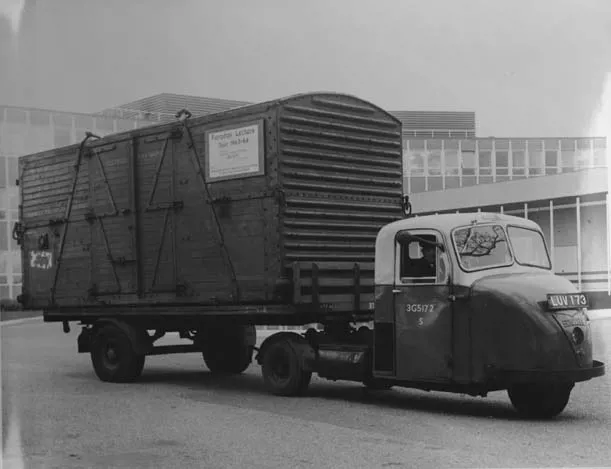
Touring lorry for the 1963 Faraday Lecture ref. IET/LEC/01
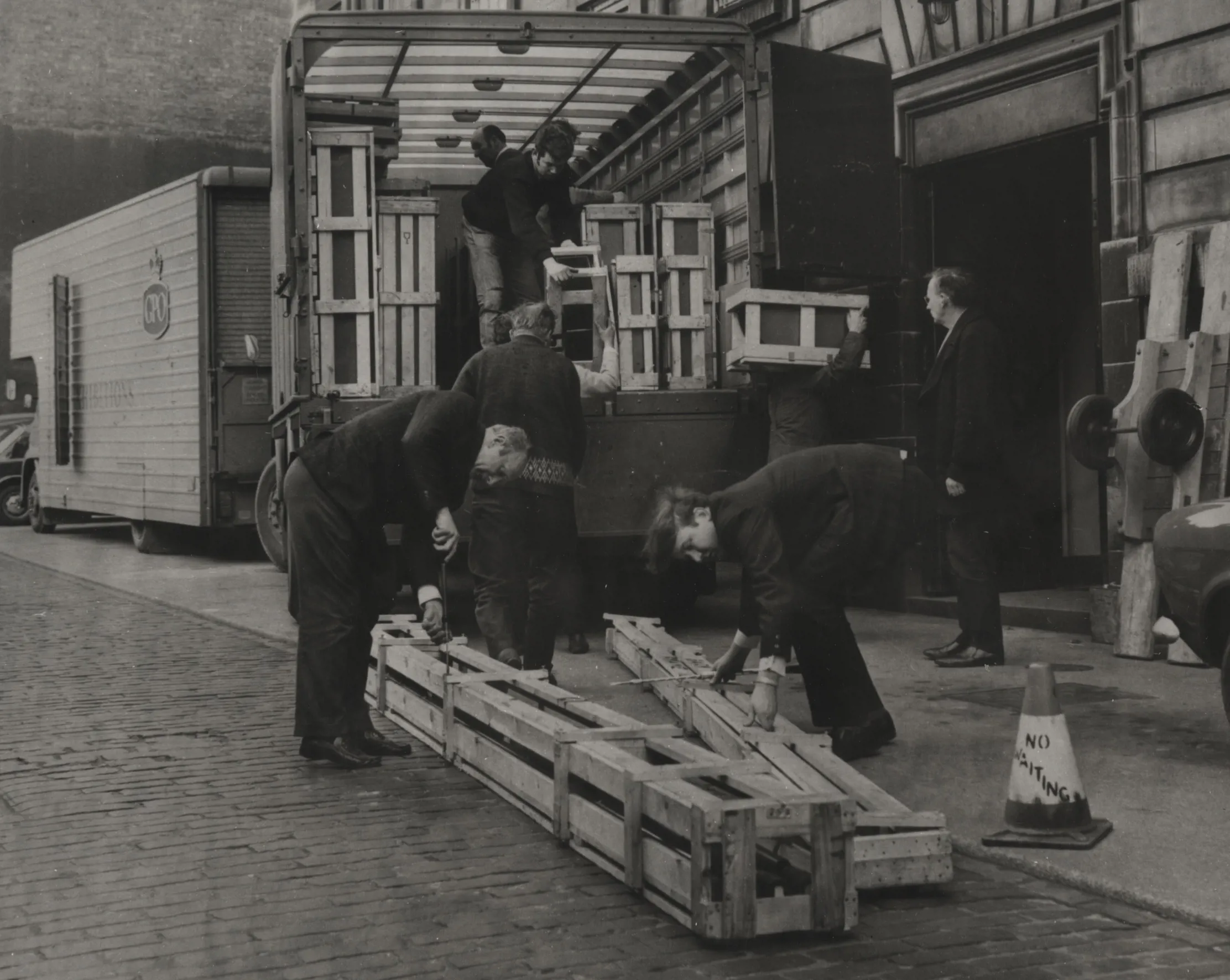
The 1969-1970 Faraday Lecture on tour ref. SC MSS 259/05
In 1957 the Faraday Lecture, delivered by Mr G H Fletcher and Mr R Ledger on ‘The Electrification of the Railways’ was heard by a total of 25 893; 5480 of these were school children. The total distance travelled by the lecture team, mainly by rail, was 2500 miles.
When Simon Mercer gave the series of Faraday Lectures ‘Smart Living @ home with technology’ in 2001-2002 he likened the experience to being on the road with a rock band!
The ‘Smart Living’ tour, which examined the role of technology in the home, took in 13 venues from Glasgow down to Jersey. Some 30,000 young people were estimated to have seen the live lecture along with several million who watched via a satellite broadcast.
Demonstrations of new domestic technology such as thinking fridges, intelligent vacuum cleaners and virtual humanoid representations of the home itself were shown to an amazed audience. Lecturer Simon Mercer compared the touring aspect to that of a rock star with the constant travel, different venues every night and staying in different hotel rooms. But he said one major difference was that if he threw his television out of the window there would be a queue of electronic engineers waiting to fix it!
Electronics Education, Volume 2002 Issue 3 pp33-34.
Electricity in the service of man
Similarly, as with the Kelvin Lectures, the Faraday Lectures were delivered by distinguished scientists and engineers.
Sebastian de Ferranti, innovator in the development of electrical engineering, power generation and distribution, was IEE President in 1910-1911. He was awarded the Faraday Medal in 1924. In 1928 he gave his Faraday Lecture, ‘Electricity in the service of man’. This lecture was delivered an astonishing ten times to the IEE’s Centres around the United Kingdom, starting in London then moving to the North Midlands, Liverpool, North West, West, Sheffield, Dublin, Scotland and finishing in the South Midlands. The lecture encompassed the great and wonderfully varied uses of electricity to aid our work, leisure, productivity, travel and entertainment. Ferranti was also a great supporter of women and the need to educate them in this time-saving technology. He stated in his lecture,
“…There has arisen a new great force in the Electrical Association for Women [founded in 1924]…The Electrical Association for Women is very new, but it has already enrolled 2000 members, and, having regard to the difficulties connected with a new enterprise, I think this shows that there must be an almost surprisingly large number of women in the country who are keenly interested in matters electrical.”
Journal of the IEE January 1929 Vol 67 No 385 p. 128.
Ferranti continued to urge all electrical engineers to consider what could be done to help this new movement and to advance the mutual aim of furthering electrical education, “I certainly intend to do all I can in this direction.”
A poster in the IET Archives supports Ferranti’s (and the Institution’s) inclusiveness with the line,
“Ladies are especially invited”
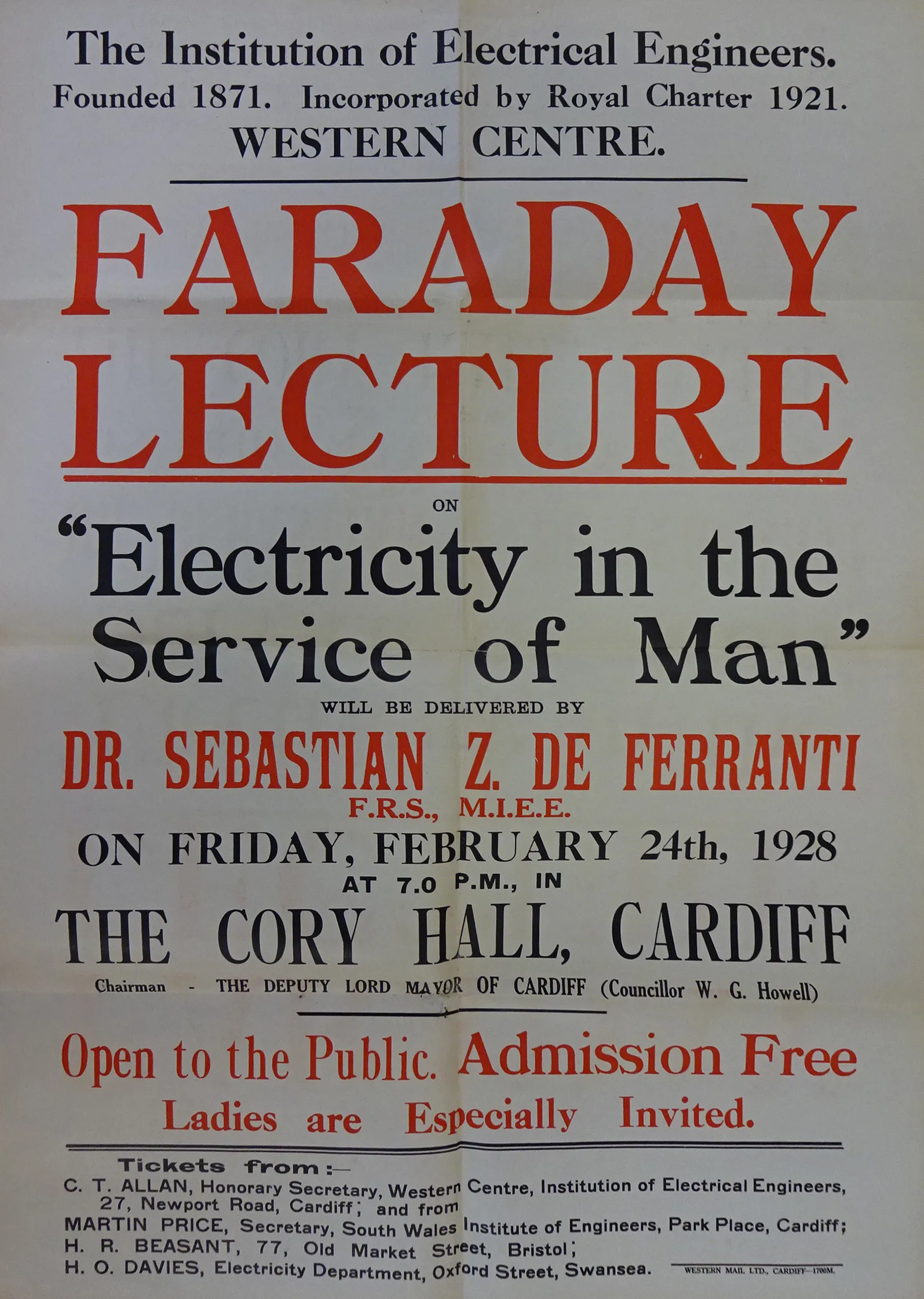
Faraday Lecture poster ref. IET/LEC/01/40
Ferranti was not only an innovator, inventor, and entrepreneur, he was also a visionary. Only days before his lecture in 1928, Ferranti remarked that with the aid of wireless, the American Institute of Electrical Engineers met jointly with the IEE. He wondered if the touring Faraday Lectures would become a thing of the past, “in which the lecturer goes round personally to each of the Local Centres.” Although there were advantages to this approach,
“Nevertheless I feel that the time cannot be far distant when we shall enjoy the greater advantages of holding our meetings in common, and future lecturers will speak on one evening only, to an audience scattered throughout all the Centres of our Institution.”
Ibid. p130
It would be some years before this became a reality, but all the IET Prestige Lectures are now filmed and live-streamed for anyone in the world to watch.
The first overseas presentation of the Faraday Lecture
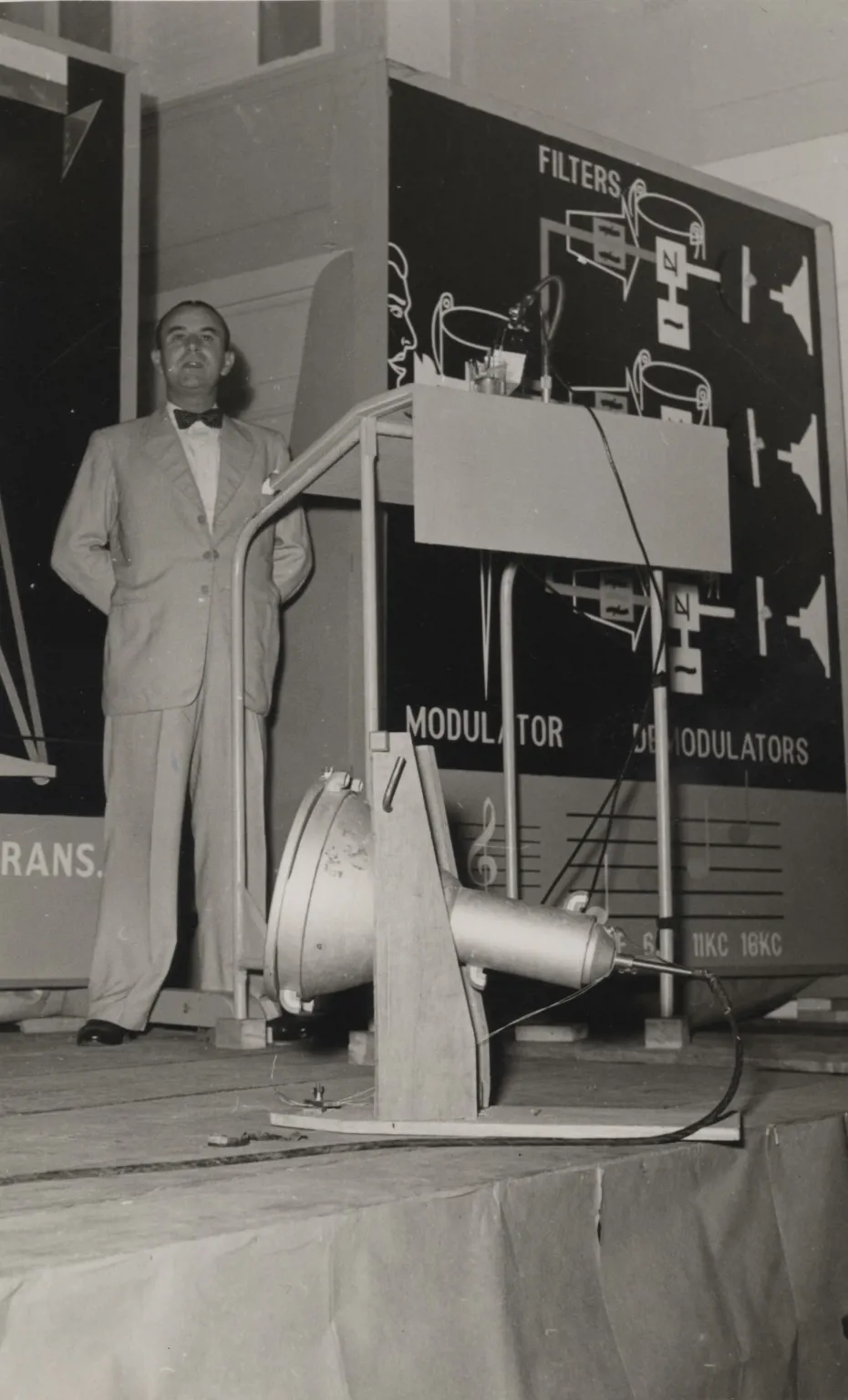
Photographs (above and below) from the 1956 Faraday Lecture presented in Malaya ref. IET/UNO/01/14
The 26th Faraday Lecture in 1954-1955, entitled ‘Courier to Carrier in Communications’ delivered by Mr T B D Terroni, was presented to audiences in both the UK and Malaya (now Malaysia).
There was good reason to send the lecture all the way to distant shores on this occasion due to the approaching independence of Malaya and Singapore from the British Commonwealth which was achieved in 1957.
As a result, they envisioned an exodus of expatriate chartered engineers and a desire to staff the public services with Malayan engineers.
It was therefore imperative to attract recruits in electrical engineering.
Delivery of the Faraday Lecture locally around Malaya was justified as a means to stimulate this recruitment drive.
Further to this there was to be considerable economic investment in Malaya including a large expansion in communications and electricity supply which would increase the need for engineering staff.
The lectures were a success, but this did not come without difficulties. In the UK lecture specialised equipment was used. Part of this included a 6-inch magnetic drum which could not be used for storage of information because of the very real possibility that the magnetisation would have been disturbed during the long journey to Malaya.
Fluorescent paint used in the UK lecture exhibit could not be replicated due to the different climate. Fortunately, one of the engineers suggested using talcum powder to overcome the stickiness of the paint!
Finding suitable venues was not always easy either. Since the majority of the audience were school children there needed to be large enough halls to house them and to not clash with school examinations or staffing priorities. Therefore, to fit in with timetables on occasions such as in Kuala Lumper the lecture was delivered twice a day, in the afternoon and evening on three successive days.
Some halls were air-conditioned but only during the performance of the lecture, during other times the equipment went through several cycles of high temperatures and humidity, which may have contributed to problems with the equipment. Other localised difficulties included the low height in the ferry loading dock which meant that equipment had to be unpacked and repacked on to the touring lorry.
There were also times when the lorry had to traverse curfew areas and on one unscheduled diversion the lorry was stopped by the local police. Thankfully some quick thinking allowed its release in time for the lecture to be presented in Seremban in time.
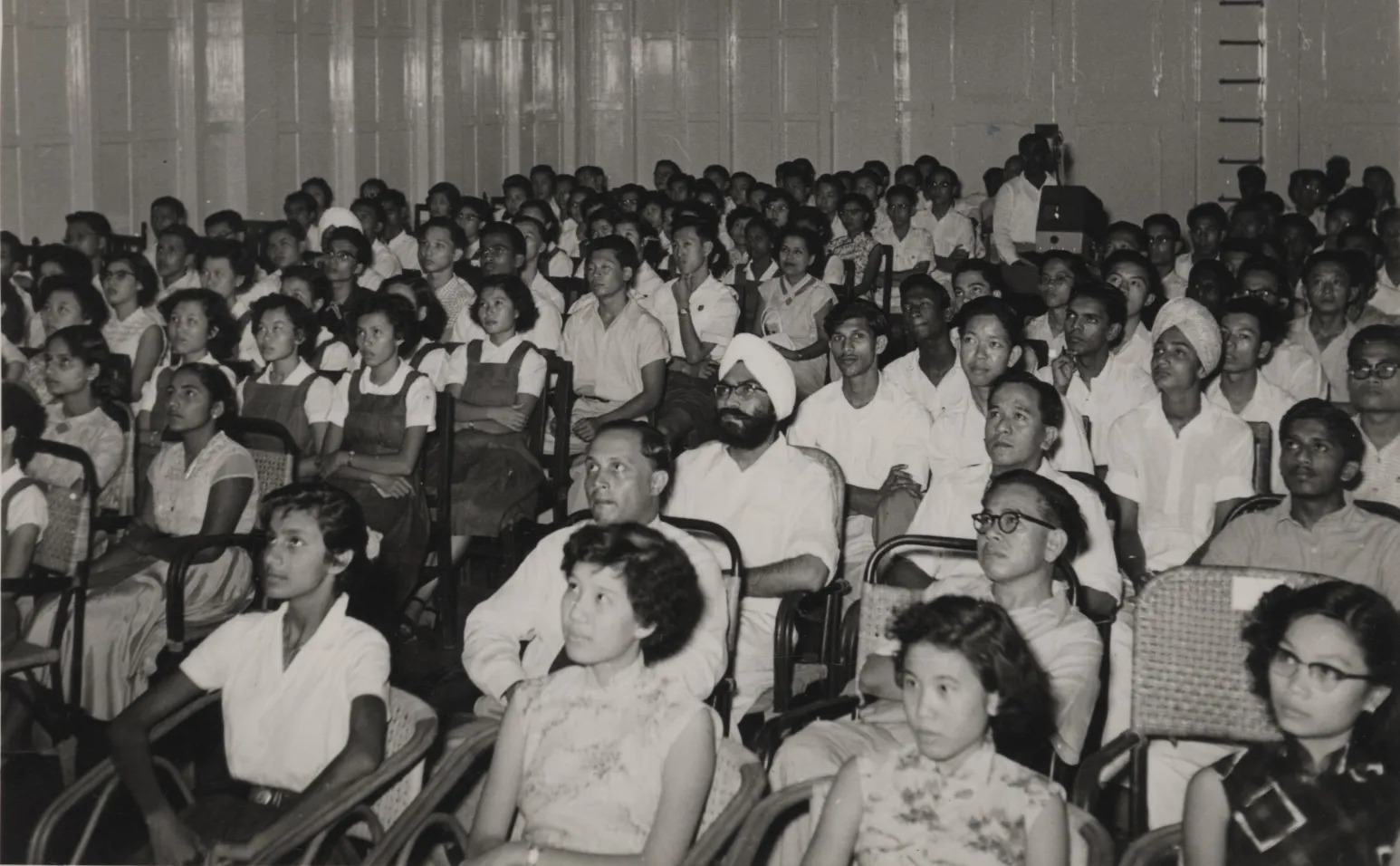
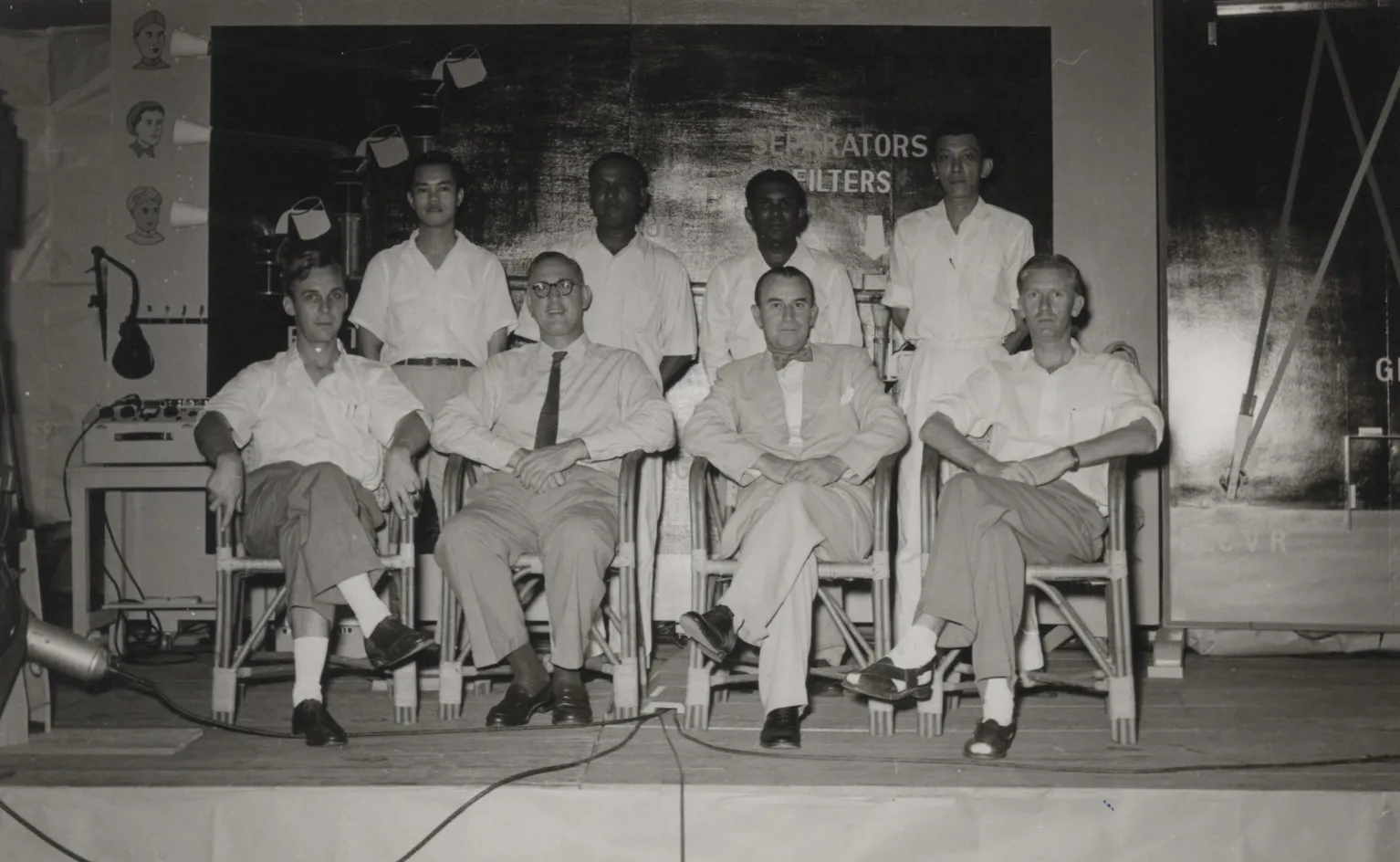
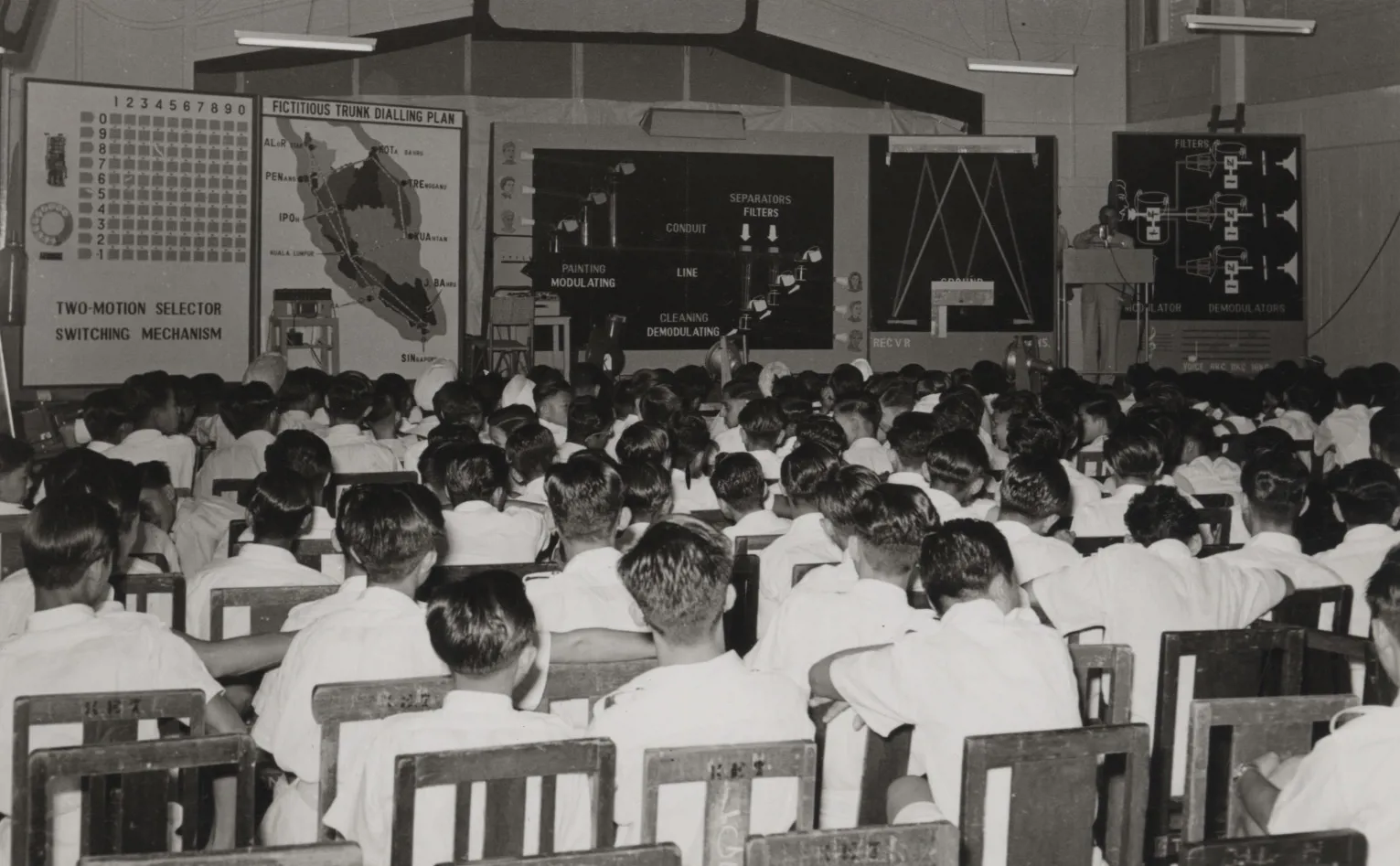
The lecture was given twenty times with a total audience, mainly school children, of 8,000. This was an enormous achievement and the success testament to the hard work from the team of engineers behind it.
Info from ‘Presenting the Faraday Lecture in Malaya’ by Dennis Smith Journal of the IEE, May 1957 pp287-289.
Lectures to wow the audience
The 1976-1977 Faraday Lecture, presented by Rear Admiral L S Bryson, Royal Navy, and John Alvey, director of the Admiralty Surface Weapons Establishment, were a combination of practical demonstrations, working models, slides, film and television.
This all helped to illustrate some of the many applications of electrical and electronic engineering on Her Majesty’s ships.
The lecturers showed that every branch of electrical engineering is represented in the Royal Navy- from the earliest use of magnetism for navigation to more recently for magnetic mines.
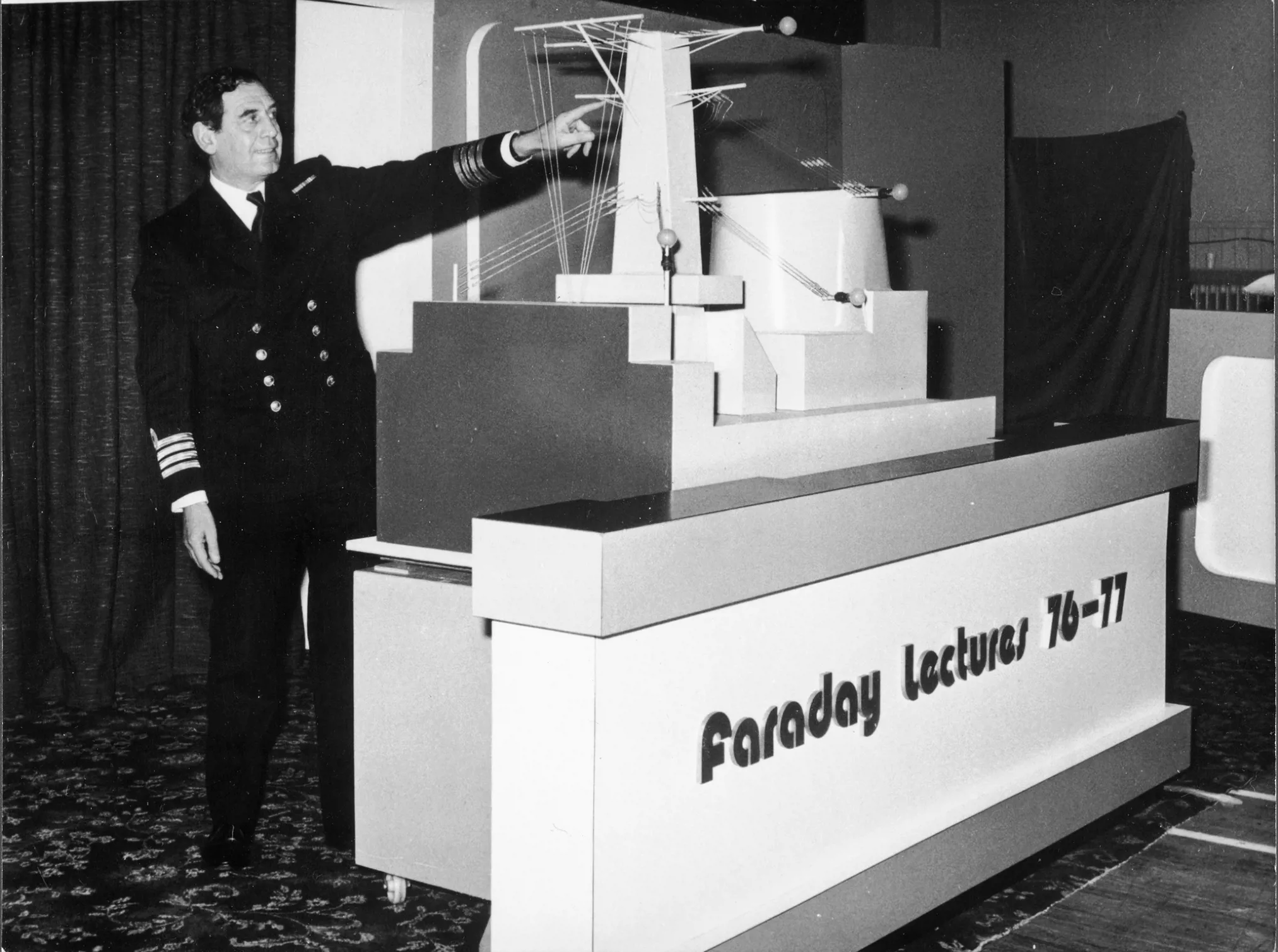
Admiral L S Bryson presenting the 1976-1977 Faraday Lecture ref. Image 1/1/64/03
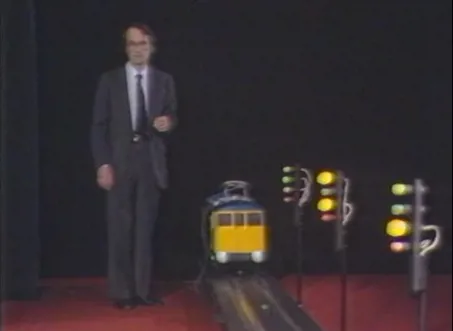
Film still from the 1982 Faraday Lecture showing the model train
The 1981-1982 ‘Railways have an electric future’ was presented by seven lecturers who gave a total of 34 lectures in 15 locations to an audience of 70,000! To demonstrate signalling systems a large model train ran along the length of the stage showing how signals change to protect the train by stopping and showing other trains following.
In 1982 – 1983 the subject of the Faraday Lecture was optical communication with the lecture entitled ‘The Photon Connection’ presented by the Standard Telephone and Cables company on the occasion of their centenary. Travelling to 15 locations and seen by an estimated 75,000 people it illustrated how crucial fibre optic communication is in the ‘information revolution’.
Salient predictions, such as the access we would have to unlimited quantities of information and the ability to communicate it to anyone, were made. A vision of a future with multiple interactive television channels that allow consumers to work and shop from home were also described at the lecture.
The lecture was a not only a spectacular show with a purpose-built transportable set that incorporated an elaborate lighting system, together with multiple slide projections, film and sound, it also explained a complex yet fundamental development in technology.
The IET Archives is currently working on a project with the London Screen Archive and the BFI (British Film Industry) to digitise some of the later Faraday Lectures from unstable video film. Once these become available to view a link will be published here.
In the meantime, you can watch some of the latest IET Prestige Lectures online via IET.tv.
We’re upgrading our systems, and this includes changes to our customer and member account log in, MyIET. It’s part of our big picture plan to deliver a great experience for you and our wider engineering community.
Whilst most of our websites remain available for browsing, it will not be possible to log in to purchase products or access services from Thursday, 17 April to Wednesday, 30 April 2025. Our Member Relations team is here to help and for many of our services, including processing payments or orders, we’ll be able to support you over the phone on +44 (0)1438 765678 or email via membership@theiet.org.
We apologise for any inconvenience this may cause and thank you for your understanding.
For further information related to specific products and services, please visit our FAQs webpage.
